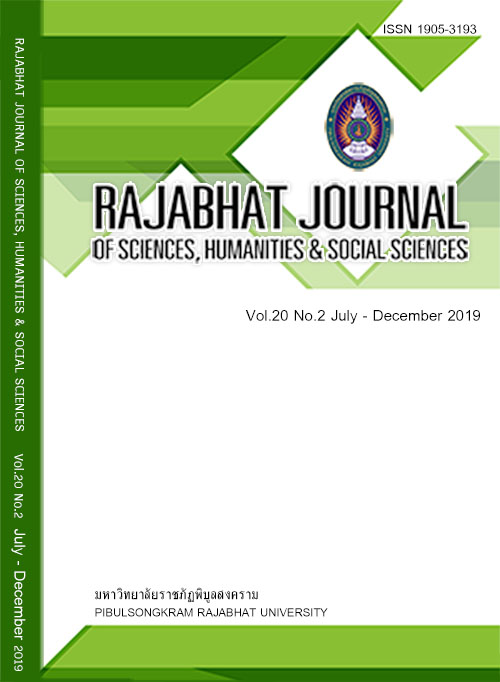EVALUATION OF GROWTH RATE AND FEED CONVERSION EFFICIENCY OF DARKLING BEETLE ZOPHOBAS ATRATUS FABRICIUS (COLEOPTERA: TENEBRIONIDAE) ON WHEAT (TRITICUM AESTIVUM) BRAN AND IVY GOURD (COCCINIA GRANDIS) LEAF
Keywords:
darkling beetle (Zophobas atratus), ECI, RGR, ivy gourd (Coccinia grandis), wheat (Triticum aestivum) branAbstract
Rearing darkling beetle (Zophobas atratus Fabricius) larvae as an alternative food source drew attention due to many advantages. In this study, Efficiency of Conversion of Ingested food (ECI) and Relative Growth Rate (RGR) were measured from Z. atratus larvae fed on wheat (Triticum aestivum) bran and fresh ivy gourd (Coccinia grandis) leaves. ECIs of these larvae fed on wheat bran were improved by supplementation of fresh ivy gourd leaves, but ECIs still declined in the late larval instars. RGR of Z. atratus larvae was at least 2.6% per day which was faster than conventional livestock. Therefore, rearing Z. atratus with wheat bran and fresh ivy gourd leaves was profitable and time saving.
References
Broekhoven S van, Oonincx DGAB, Huis A van. et al. Growth performance and feed conversion efficiency of three edible mealworm species (Coleoptera: Tenebrionidae) on diets composed of organic by-products. Journal of Insect Physiology. 2015; 73: 1-10.
Cerritos R. Insects as food: an ecological, social and economical approach. CAB Reviews: Perspectives in Agriculture, Veterinary Science, Nutrition and Natural Resources. Wallingford, UK: CABI; 2009: 1-10.
DeFoliart G, Dunkel FV, Gracer D. The Food Insects Newsletter Chronicle of Changing Culture. Salt Lake City: Aardvark Global Publishing; 2009.
Greenberg S, Ar A. Effects of chronic hypoxia, normoxia and hyperoxia on larval development in the beetle Tenebrio molitor. Journal of Insect Physiology. 1996; 42: 991-996.
Huis A van. Potential of insects as food and feed in assuring food security. Annual review of Entomology. 2013; 53: 563-583.
Huis A van, Itterbeeck J van, Klunder H. et al. Edible Insects Future Prospects for Food and Feed Security. Rome: Food and agriculture organisation of the United Nations; 2013.
Lebret B. Effect of feeding and rearing systems on growth, carcass composition and meat quality in pigs. Animal. 2008; 2: 1548-1558.
Loudon C. Development of Tenebrio molitor in low oxygen levels. Journal of Insect Physiology, 1988; 34: 97-103.
Nakagaki BJ, DeFoliart GR. Comparison of diets for mass-rearing Acheta domesticus (Orthoptera: Gryllidae) as a novelty food, and comparison of food conversion efficiency with values reported for livestock. Journal of Economical Entomology. 1991; 84: 891-896.
Noort MWJ, Haaster D van, Hemery Y. et al. The effect of particle size of wheat bran fractions on bread quality – evidence for fiber-protein interactions. Journal of Cereal Science. 2010; 52: 59-64.
Oonincx DGAB, de Boer IJM. Environmental impact of the production of mealworms as a protein source for humans - a life cycle assessment. PLoS ONE. 2012; 7: e51145.
Oonincx DGAB, Broekhoven S van, Huis A van. et al. Feed conversion, survival and development, and composition of four insect species on diets composed of food by-product. PLoS ONE. 2015; 10: e0144601.
Oonincx DGAB, Itterbeeck J van, Heetkamp MJW. et al. An exploration on greenhouse gas and ammonia production by insect species suitable for animal or human consumption. PLoS ONE. 2010; 5: e14445.
Quennedey A, Aribi N, Everaets C. et al. Postembryonic development of Zophobas atratus Fab. (Coleoptera: enebrionidae) under crowded or isolated conditions and effects of juvenile hormone analogue applications. Journal of Insect Physiology. 1995; 41: 143-152.
Ramos-Elorduy J, Moreno JMP, Prado EE. et al. Nutritional value of edible insects from the state of Oaxaca, Mexico. Journal of Food Composition and Analysis. 1997; 10: 142-157.
Ranhotra GS, Gelroth JA, Astroth K. et al. Distribution of total and soluble fiber in various millstreams of wheat. Journal of Food Science. 1990; 55: 1349-1351.
Tammaru T, Nylin S, Ruohomäki K. et al. Compensatory responses in lepidopteran larvae: a test of growth rate maximization. Oikos. 2004; 107: 352-362.
Tschinkel WR. Larval dispersal and cannibalism in a natural population of Zophobas atratus (Coleoptera: Tenebrionidae). Animal Behaviour. 1981; 29: 990–996.
Veldkamp T, Duinkerken G van, Huis A van. et al. Insects as a sustainable feed ingredient in pig and poultry diets: a feasibility study. Wageningen Netherlands: Wageningen UR Livestock Research; 2012.
Waldbauer GP. The consumption and utilization of food by insects. Advances in Insect Physiology. 1968; 5: 229-288.
Weaver DK, McFarlane JE. The effect of larval density on growth and development of Tenebrio molitor. Journal of Insect Physiology. 1990; 36: 531-536.
Downloads
Published
How to Cite
Issue
Section
License
Each article is copyrighted © by its author(s) and is published under license from the author(s).










